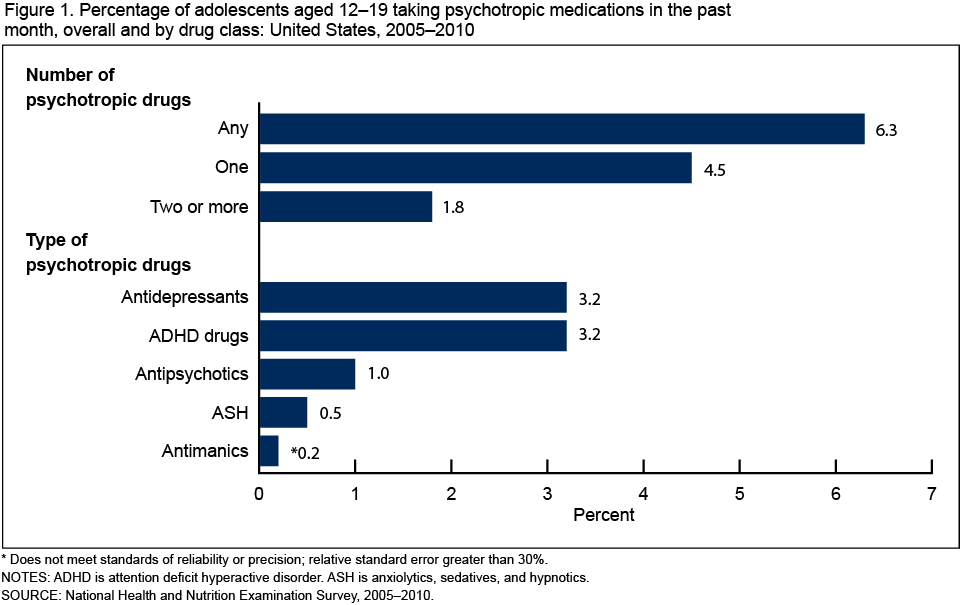More Than 6% of U.S. Adolescents Take Psychotropic Drugs
Posted on byA new report released by NCHS provides the estimate of any psychotropic medication use in the past month among U.S. noninstitutionalized adolescents aged 12–19 during 2005–2010, using National Health and Nutrition Examination Survey (NHANES) data. Psychotropic medication is a type of drug used to treat clinical psychiatric symptoms or mental disorders. Specific psychotropic drug types addressed are antidepressants; medications for attention deficit hyperactive disorder (ADHD); anxiolytics, sedatives, and hypnotics (ASH); antimanics; and antipsychotics. Adolescents using psychotropic drugs are further examined by sex, race and Hispanic origin, and mental health professional consultation.
Key Findings From the Report:
Approximately 6.0% of U.S. adolescents aged 12–19 reported psychotropic drug use in the past month.
- The use of antidepressants (3.2%) and attention deficit hyperactive disorder (ADHD) drugs (3.2%) was highest, followed by antipsychotics (1.0%); anxiolytics, sedatives, and hypnotics (0.5%); and antimanics (0.2%).
- Males (4.2%) were more likely than females (2.2%) to use ADHD drugs. Females (4.5%) were more likely than males (2.0%) to use antidepressants.
- Psychotropic drug use was higher among non-Hispanic white (8.2%) adolescents than non-Hispanic black (3.1%) and Mexican-American (2.9%) adolescents.
- About one-half of U.S. adolescents using psychotropic drugs in the past month had seen a mental health professional in the past year (53.3%).
Posted on by


